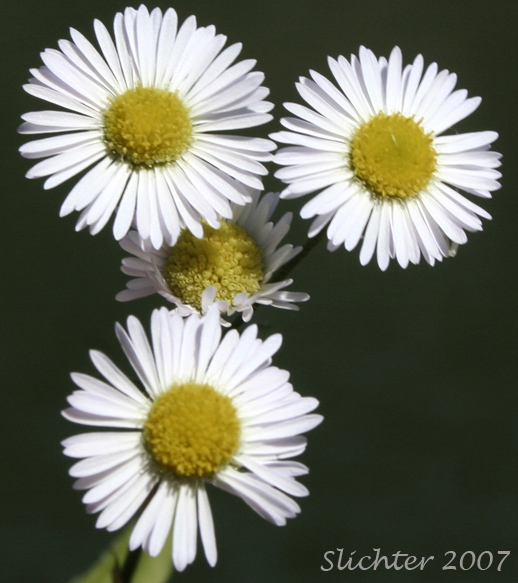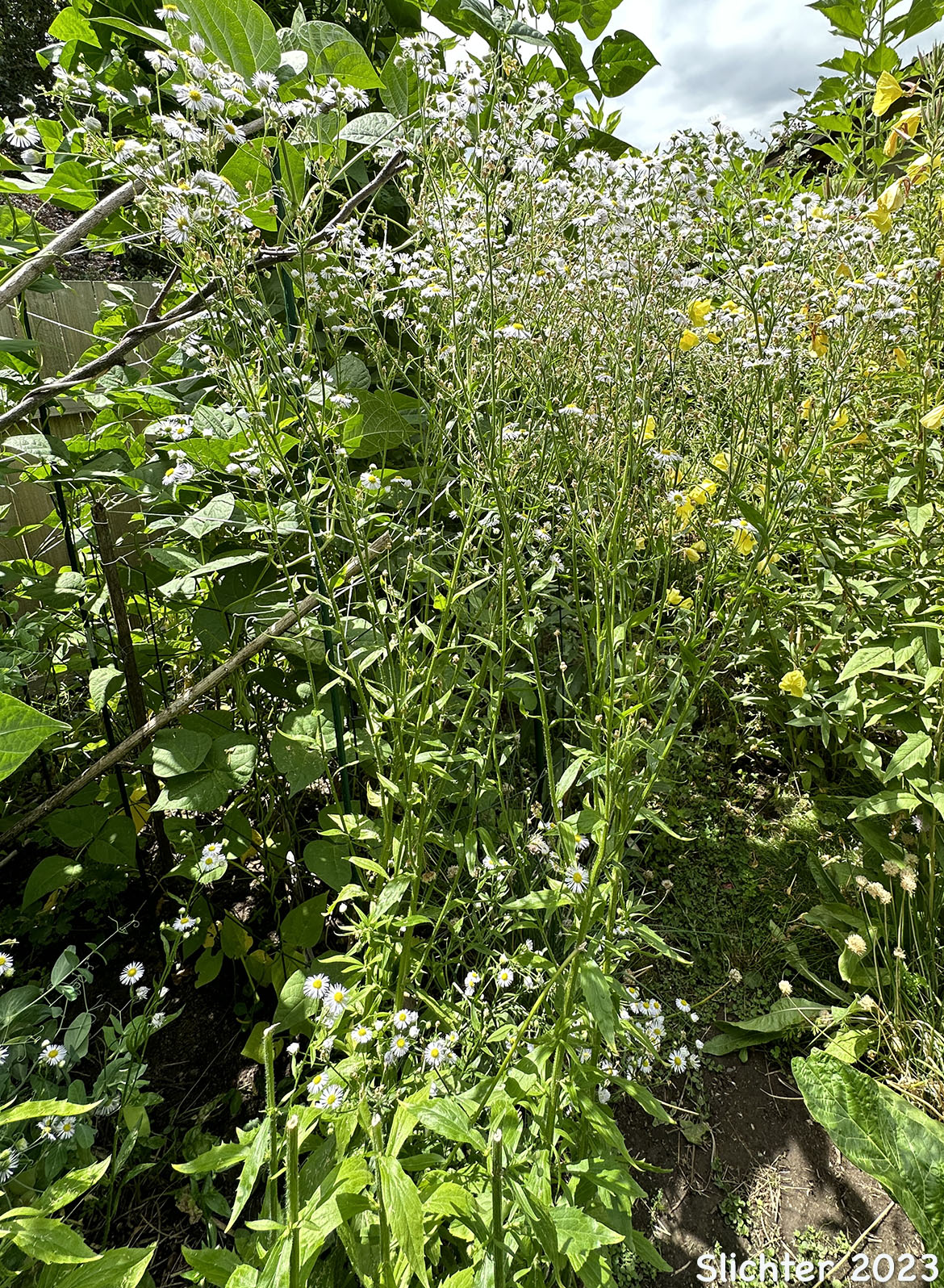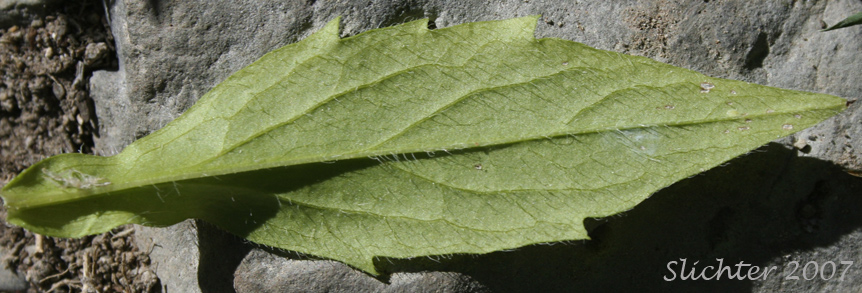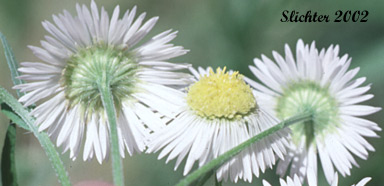[Daisies and Fleabanes: The Genus Erigeron West of the Cascade Mountains of Oregon and Washington]
Annual Fleabane, Eastern Daisy Fleabane, Sweet Scabrous Erigeron, Sweet Scabrous Fleabane
Erigeron annuus
Synonyms: Aster annuus, Erigeron annuus var. discoideus
 -
- 
The photo at left of shows the flower heads of annual fleabane as seen from the banks of Gillette Lake, several miles north of Bonneville Dam in the western
Columbia River Gorge........September 12, 2007. The photo at right shows a close-up of the flower heads of annual fleabane as observed along equestrian trails high in Beacon Rock State Park.......November 13, 2018.
Characteristics:
Annual fleabane as its name implies is an annual herb, or occasionally
a biennial. Its one to several stems are erect, measuring from 60-150 cm high.
The stems are often branched. The herbage of the stems usually consists of long,
spreading hairs below the inflorescence. The basal leaves are oblanceolate to
broadly ovate, and are prominent early in the growing season, but become deciduous
as blooming season begins. The stem leaves are broadly lanceolate with coarsely
toothed margins. The lower stem leaves measure from 6-12 cm long.
The open inflorescence is large and leafy. The hemispheric involucre
is 3-5 mm high and finely glandular and sparsely long-haired. The 80-125 rays
are white (occasionally light blue or lilac) and measure to 10 mm long and from
0.5-1 mm wide.
Habitat:
Annual fleabane is a weedy species found in moist disturbed
ground, including gardens, ditches, roadsides, trails and waste areas.
Range:
Originally from Europe, annual fleabane may be found across
much of the United States and southern Canada.
In the Columbia River Gorge, annual fleabane is found between
the elevations of 100'-2400' between Troutdale, Oregon and Hood River, Oregon.

Non-native annual fleabanes growing in the webmaster's Gresham, OR vegetable garden where they are favorite pollinator plants (all types of bees). At least in the garden, they grow to nearly 6 feet high and bloom most of the summer and fall......July 25, 2023.

The photos above show the upper (top) and lower (bottom) surfaces of a leaf from mid-stem of annual fleabane. Note the few, coarse teeth on the margin of the
blade as well as the numerous spreading hairs from both surfaces.
The photo above of shows a sideview of the upper stem and inflorescence of annual fleabane as seen from the banks of Gillette Lake, several miles north of Bonneville Dam in the western Columbia River Gorge.........September 12, 2007.
A view of the involucres of annual fleabane
from the Columbia River Gorge.
Paul Slichter
